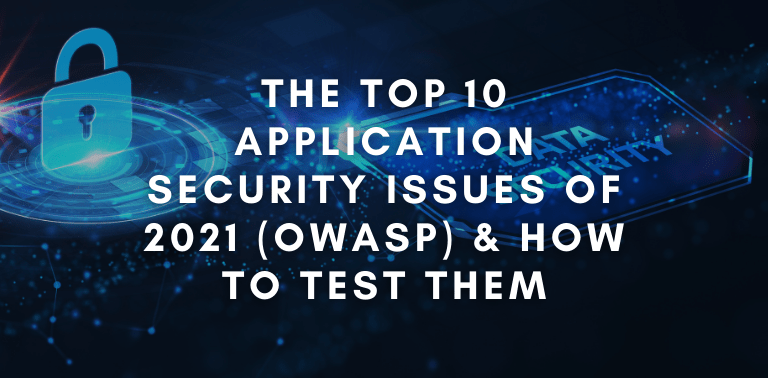VAPT to Safeguard your Healthcare Apps
Introduction : In an era where cyber threats are increasingly sophisticated, ensuring the security of healthcare applications is paramount. This article outlines the process of conducting a vulnerability assessment and gray-box penetration testing on a healthcare application using Burp Suite Professional, OWASP ZAP, and manual testing techniques. The primary objective was to identify potential vulnerabilities that could be exploited by attackers and provide recommendations for mitigating these risks. Purpose of testing : The purpose of this security testing was to identify vulnerabilities in the healthcare application and ensure its robustness against cyber threats. By uncovering weaknesses, we aim to enhance the application’s security posture, protect sensitive health data, and ensure compliance with industry standards (OWASP Top10 issues). Scope of testing : The scope encompassed both automated and manual testing techniques. The testing focused on identifying critical vulnerabilities, including OWASP Top 10 issues, SQL injection, Cross-Site Scripting (XSS), and other common security flaws. The testing was divided into two main phases: Vulnerability assessment Penetration Testing Tools and techniques : Vulnerability assessment:- Automated scanning tools, such as Burp Suite Professional and OWASP ZAP, were employed to systematically identify common security vulnerabilities. These tools were chosen for their robust capabilities in detecting a wide range of security issues efficiently. The automated phase involved: Burp Suite professional: Used for its extensive functionality in identifying and exploiting vulnerabilities, Burp Suite provided comprehensive coverage of the OWASP Top 10 issues. OWASP ZAP: Utilized for its user-friendly interface and effective automated scanning capabilities, OWASP ZAP was instrumental in the initial identification of vulnerabilities. The automated scans targeted various components of the healthcare application to uncover vulnerabilities such as: SQL Injection Cross-Site Scripting (XSS) OWASP Top 10 issues Other critical vulnerabilities These automated scans provided a comprehensive overview of the existing security weaknesses within the healthcare application, setting the stage for the subsequent penetration testing phase. Penetration testing :- The manual testing phase involved a more detailed and nuanced examination of the system. This included: Thorough manual assessment: We began with a meticulous manual review of the application to identify potential vulnerabilities. This involved examining the architecture and functionality to pinpoint key fields and components susceptible to attacks. Exploitation of vulnerabilities: Based on the findings from the manual assessment and automated scans, we attempted to exploit identified vulnerabilities to understand their potential impact. Identification of additional vulnerabilities: Manual testing also focused on discovering vulnerabilities that automated tools might have missed, ensuring a comprehensive assessment. Findings and Analysis: The combination of automated and manual testing techniques provided a full view of the healthcare application’s security posture. Key findings included: High severity issues: The assessment revealed that cloud metadata was potentially exposed, posing a significant risk to the confidentiality and integrity of sensitive data stored in the cloud environment. Medium severity issues: CSP (Content Security Policy) wildcard directive: The presence of wildcard directives in the Content Security Policy could weaken security controls and increase the risk of cross-site scripting (XSS) attacks. Hidden file found: Discovery of hidden files within the application’s directory structure could indicate potential security risks or unauthorized access. TLS certificate issues: Weaknesses in the Transport Layer Security (TLS) certificate configuration could expose sensitive data to interception or unauthorized access. Strict transport security not enforced: Failure to enforce Strict Transport Security (HSTS) could leave the application vulnerable to protocol downgrade attacks and unauthorized access. Low severity issues: The assessment also identified areas for improvement in data protection measures, although these were classified as low severity Recommendations : Based on the findings, we provided the following recommendations to mitigate identified risks: High severity issues: Cloud metadata exposure: Implement stringent access controls and encryption for cloud metadata to prevent unauthorized access. Regularly review and update cloud security configurations to ensure compliance with best practices. Medium severity issues: CSP Wildcard directive: Remove wildcard directives from the Content Security Policy. Define specific sources for content to minimize the risk of XSS attacks. Hidden file found: Conduct a thorough audit of the application’s directory structure to identify and secure hidden files. Implement access controls to restrict unauthorized access. TLS certificate issues: Review and strengthen the TLS certificate configuration. Ensure the use of strong, up-to-date certificates and enforce proper TLS protocols to protect data in transit. Strict transport security not enforced: Enable and enforce HTTP Strict Transport Security (HSTS) to prevent protocol downgrade attacks and ensure secure communication. Low severity issues: Data protection improvements: Enhance data protection measures, including data encryption and secure storage practices. Regularly review and update security policies to align with industry standards. Conclusion : The vulnerability assessment and penetration testing of the healthcare application highlighted critical security issues and provided valuable insights into the application’s security. By addressing the identified vulnerabilities and implementing the recommended security measures, the healthcare application can significantly enhance its defence against potential cyber threats, ensuring the safety and integrity of sensitive health data. 5+


